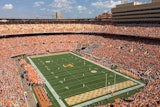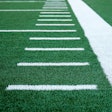While walking around the trade show at the IHRSA convention this past spring, I was struck by all of the hoopla surrounding what, in essence, is virtually the same equipment that has been presented to club owners for the past several years. It seems like the industry has not witnessed a tremendous evolution in products since the introduction of elliptical trainers and cable-based functional training systems nearly a decade ago.
The Real Ryder™ is an intriguing product, both in its programming options and its ability to stand up to heavy use (the additional mobility can reduce wear and tear on the stress points typical of traditional indoor cycling bikes). Likewise, the user-driven Woodway treadmill and similar self-powered products present an interesting option in terms of reducing a club's energy expenses. Other than that, there was very little that seemed to be game-changing at the show. Aside from the aforementioned products, the advances that got me most excited were the addition of power meters to group indoor cycling bikes and the use of memory sticks and QR readers to help users interface with equipment more efficiently. (I'll really get excited once manufacturers agree on one standard so a user can switch from piece to piece and store the same data.)
As I perused the latest, "greatest" equipment features, I began to ponder the tremendous utilization of resources to re-create what really are the exact same products. It seems to me that if club owners and operators want to do a better job of retaining members and achieving more profitability, they might instead look to invest in staff and exercise programs they can use to help members achieve results. That's not to say that owners shouldn't replace worn equipment, a necessity given that many pieces of club equipment are utilized more than 12 hours a day. (Side note: When I worked for a large East Coast-based club chain, we purchased new equipment twice a year. This made the members extremely happy, except when we had to deal with a member whose favorite machine went away. I still feel getting a new piece is one of the "good problems" operators have to deal with). However, rather than simply upgrading to a newer model of the same old cardio piece, owners should explore how they can invest in their staff (to help them have more effective interactions with club members) and the development of exercise programs that deliver real results.
There are three basic economic inputs for a facility - land (the physical structure of a club), capital (the exercise equipment and physical plant of the facility) and labor (the individuals who work closely with members and are the ones responsible for making the facility a fun place to visit). The IHRSA show featured a variety of ways to spend limited resources on capital equipment, but I think focusing more on the labor component and identifying new ways to invest in staff and develop programming is more critical to retaining and attracting happy club members.
The fact is that despite all the fancy new interfaces that utilize memory sticks to remember a client's details or a QR reader that can demonstrate a unique exercise circuit, no piece of equipment can replace the human interaction that is necessary for a member to make a personal connection to a facility. A treadmill with a memory stick might remember a setting and training intensity, but it can't remember to ask how that business presentation went yesterday or about your son's birthday party last weekend. It's this personal interaction that can help members feel good about spending time in the gym. Research by Whaley and Schrider (The Process of Adult Exercise Adherence: Self-Perceptions and Competence) found that the interactions between staff and members were critical for adherence in a supervised exercise program. The study participants cited the friendliness of the staff, their expertise, feedback and providing a feeling of safety as key factors in program compliance. There are a number of options for investing in equipment. Those that offer professional development training for fitness staff and support in the form of revenue-producing programs are the ones operators should look to first for providing a strong ROI on this year's budget. The staff will appreciate the learning opportunities, the members will appreciate the programs designed to help them achieve results, and facility owners will appreciate the enhanced utilization, retention and bottom-line revenue.




































